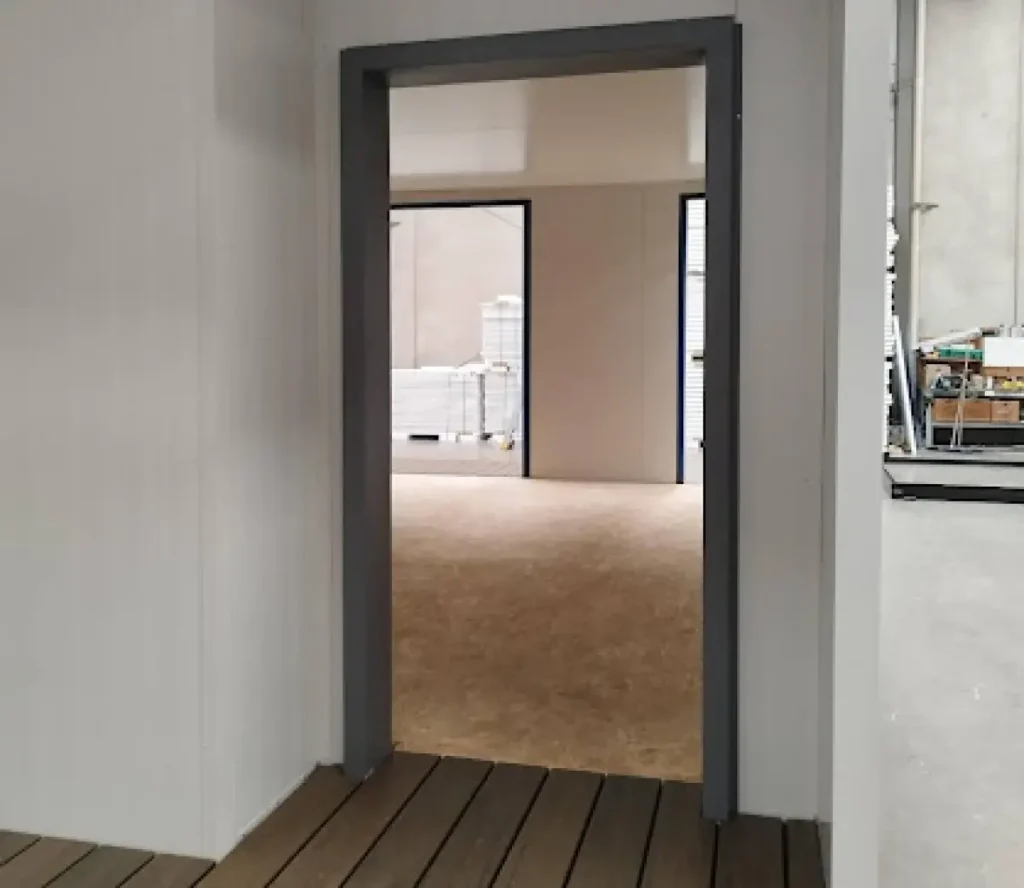
Portable building permit requirements are one of the first things property owners and businesses need to consider when planning to install a new structure. The permit requirements vary across Australia, and the rules can be confusing the moment size, height, utilities, and placement come into play
Knowing when you don’t need a permit can save you time, money, and stress while ensuring you remain compliant with local laws.
This guide covers the most common scenarios where permits aren’t required, the regulations you should know, and how exemptions can benefit you. You’ll also see when a quick chat with your council (or Nova Portable) will save time and cost.
Before diving into state rules, lock in these basics. Exemptions usually hinge on use (non-habitable), size (small footprint), height (low profile), and placement (setbacks/boundaries):
Understanding permit exemptions starts with local laws and regulations. In most regions, portable buildings are exempt when they are below a specific size or used for non-habitable purposes.
In many areas, portable storage buildings under 10–20 square metres can be installed without a permit. These are often used for garden sheds, tool storage, or small hobby rooms.
However, size limits vary depending on your local council. Always check before installation.
Height is just as important as floor space. Even if your building is small in area, exceeding a set height (often 2.4–3 metres) may trigger permit requirements. Taller structures can create safety and zoning issues.
Some councils restrict the number of exempt portable rooms or storage buildings on one property. For example, you may be allowed one exempt shed, but need permits for additional structures
Portable buildings are often exempt from permits in practical, everyday scenarios.
Garden sheds and small portable storage buildings are the classic exemptions when they meet area, height, and setback limits. As soon as you add plumbing, habitable use, or push heights too far, you’ll usually need approval.
Short-term site offices or event rooms might be exempt if they remain within size limits, meet setbacks, and are removed on time. Check the local definition of “temporary” and any maximum duration.
A hobby room or studio with no plumbing and no cooking facilities stands a better chance of exemption. Adding services typically changes the classification and triggers permits.
Even with exemptions, regulations still apply. Ignoring them can result in fines or forced removal.
Portable buildings must often be placed a minimum distance from property boundaries, fences, or other structures.
A permit exemption doesn’t override zoning laws. For instance, you can’t use a portable building for permanent residential purposes on land zoned for agricultural use.
Permit-exempt structures typically cannot include fixed utilities. Installing power or plumbing almost always requires approval.
(For a detailed external guide, see Storage Guidelines).
Knowing when you don’t need a permit offers clear advantages.
Skip unnecessary applications. Choose a compliant size from the start and move faster to installation.
Non-compliant installs can trigger fines or removal orders. A 10-minute rules check beats a tear-down.
If your project needs power, plumbing, or more floor area, you can plan for a proper approval path early.
Size matters when it comes to portable building permit requirements. Staying within the size, height, and usage limits can save you from unnecessary paperwork and expenses. Before setting up, always confirm with your local council and ensure your structure complies with portable building regulations.
At Nova Portable, we make it simple. Whether you require a small storage solution that stays permit-exempt or a fully serviced modular building designed to meet every compliance requirement, our team guides you from start to finish.
Looking to go bigger or install a fully serviced structure?
Explore our Custom Modular Buildings or Contact us now for tailored solutions that fit your needs and avoid costly delays.
1. What size of portable building is typically exempt from requiring a permit?
In many VIC and QLD cases, ≤ 10 m² is a common trigger for exemption from building permits/approvals, provided height and siting conditions are met. NSW uses Exempt Development rules with similar “small/low” themes under the Codes SEPP. Always verify with your council because local conditions vary.
2. How tall can a portable structure be to still qualify for permit exemption?
Expect 2.4–3.0 m limits depending on state and boundary distance (eaves limits near boundaries can apply). Check the exact figure with your council.
3. How many exempt portable buildings can I place on my property without a permit?
It’s often one small exempt outbuilding before approvals apply, but this varies. Multiple structures or clustered outbuildings usually require an approval step.
4. Can I install utilities in a permit-exempt portable building?
Plumbing almost always requires approval. Hard-wired electrical work also changes the picture. Utilities can convert an exempt storage shed into assessable building work.